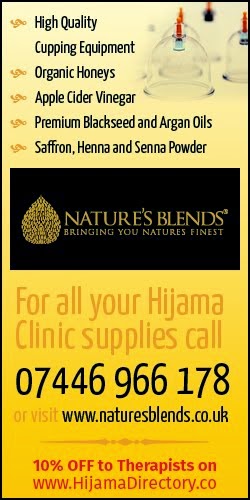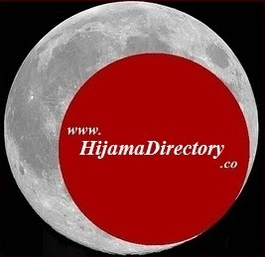The following post is by Amin Shah, a male Hijama Therapist in Boston, Massachusetts, USA and was originally published at the following link http://hijamaherbs.net/how-hijama-heals-injury/ and is reproduced here with the kind permission of the author.
HOW HIJAMA HEALS INJURY
Hijama is the method of pulling out dirty, stagnant or congealed blood from the body. Small incisions are made on the skin and then cups made of plastic or glass are placed and pumped to create suction. Cups are left for a few minutes during which time the dirty blood flows out into the cups. Hijama relaxes and releases tight, painful muscles and increases blood circulation.

Hijama is an effective remedy for pain and injury. By relaxing tight, painful muscles and withdrawing dirty, stagnant blood from the area of injury, pain is alleviated
After any injury, the hurtful areas are the areas that hold a blockage of blood and body fluids. Injured joints become swollen and painful. Backs become stiff, painful and difficult to move. This blockage of blood and body fluids that accompanies an injury is like a beaver dam. The force of the accident or injury creates the initial obstruction – the sticks, mud and leaves of the dam.
The free flowing water of the mountain stream is slowed down to a small trickle as stagnant water backs up behind the dam. And like the water of a beaver dam, which can cause flu like symptoms for those who swim in it, the stagnant blood and body fluids that occur at the injury can cause pain and inflammation. Just as the still waters of a beaver dam heat up in the sunlight, stagnant blood and fluids in our body are heated up by our naturally warm body temperatures.

Stagnant blood is like the beaver dam which slows down blood circulation to a trickle instead of gushing stream flow. Hijama helps to break up the dam and allows the blood to flow smoothly again
Even after surgery, the injured area continues to hurt, and never feels completely the same. That’s because the beaver dam has to be broken up and removed so that blood can flow through the injured area, healing the injured muscles, joint, tendons, and bones. If the area is still blocked and “dammed up” then the body cannot properly heal.
A good example of blood and body fluids that are dammed up or stagnant is a blood clot. After an accident, small blood vessels are ruptured, causing blood to collect in muscles. This blood then is heated up the body temperature, and begins to act like glue. The muscles, which have tightened up in response to the accident, now have glue holding the muscle fibers together even tighter.
The joints, which have joint fluid, stuck blood, and white blood cells, minerals, nutrients all congealing in the area, become stiff and painful as these do not move along back into circulation after the injury, but instead begin to stick in the joint area, and sometimes even swell up. Tears and sprains are not able to heal as circulation is not repaired, and as the area is painful to use, one tends to keep it as still as possible.
Acupuncture uses acupuncture needles to increase the flow of blood to the area so that an injury can heal faster and better than it would by itself. But if the area is badly dammed up, and circulation is increased, the dam just begins to get bigger and bigger. Increasing circulation actually makes it worse but only because first, the dam needs to be broken up and removed, and then increasing the circulation of the water (the injury) will assist the body’s healing process. This is where Hijama or cupping really helps.

Hijama pulls out the congealed blood out of the muscle and the glue that binds the already tight muscle fibers. This loosens the muscles and relieves pain.
One purpose of Hijama is to relieve the pain of tight and sore muscles. This is done by pulling the muscle fibers into the cup. This loosens the muscles and relieves pain. It also pulls the stuck blood within the muscle onto the surface of the skin. This occurs when an injury ruptures small blood vessels within the muscle fibers, causing blood to collect in the muscle and “glue” the already tight muscle fibers together. Hijama is able to pull the congealed blood out of the muscle and onto the surface of the skin.
Another purpose of Hijama is to pull blood and body fluids up to the surface of the skin, removing it from stuck areas like swollen knee joints or frozen shoulders. As a result, Hijama will often produce a red or purple circle upon the skin that may take a few days to heal.
These circles are only dark colored if the area that is cupped has “stuck” body fluids and blood. You should expect some circular discoloration or bruising if you are cupped. Keep in mind, this is only occurring because stuck fluids and blood congeal and act like glue, keeping joints stiff and swollen and gluing muscle fibers. These circular discolorations and bruising occur in the process of drawing these stuck fluids and blood out of injured areas – they are part of the healing process.

Hijama will often produce a red or purple circle upon the skin that may take a few days to heal. These circles are only dark colored if the area that is cupped has “stuck” body fluids and blood.
As you improve with each treatment, the circular discolorations will become less and less red. Everyone heals at their own pace, and some of the healing will also depend on how physically active you are, how well you treat your body (diet, posture, stress levels), and how often you come to therapy.
Bottom line, this is your healing process, and your treatment, so you have to honor your body and allow it to recuperate to good health again.
FEATURED HIJAMA THERAPISTS:
Amin Shah
Shahclan Ventures
PO Box 441, Boston,
MA 02134
United States of America
CONTACT DETAILS:
Phone: 617-787-5151
Email: aminshah@shahclan.net
Website: www.shahclanhijamaherbs.net
_________________________________________________
Our thanks to Amin Shah from Boston, Massachusetts, USA for sharing the above post. If you have any questions for them or indeed have been treated by them and want to leave them a testimonial, then please do so via a comment* below.
If you are a hijama therapist or patient and are happy to share your knowledge or experience via a guest blog-post like the one above, please contact us via the Contact Form on the top right corner of the blog..
Website: www.shahclanhijamaherbs.net






